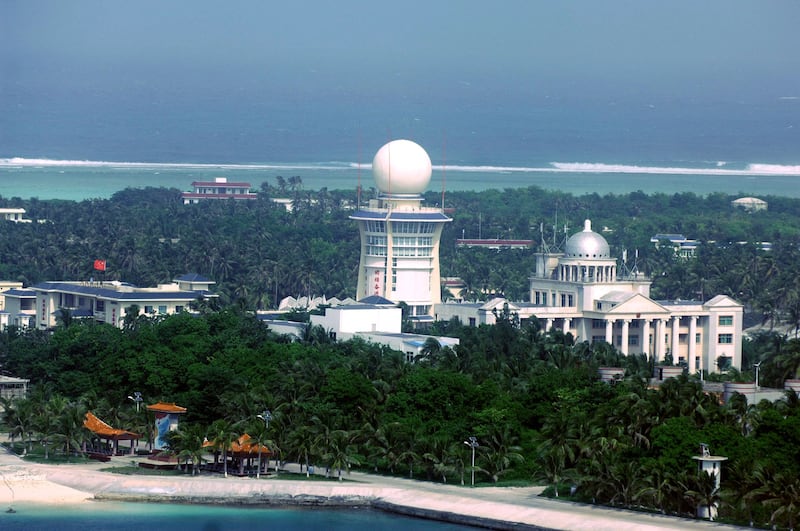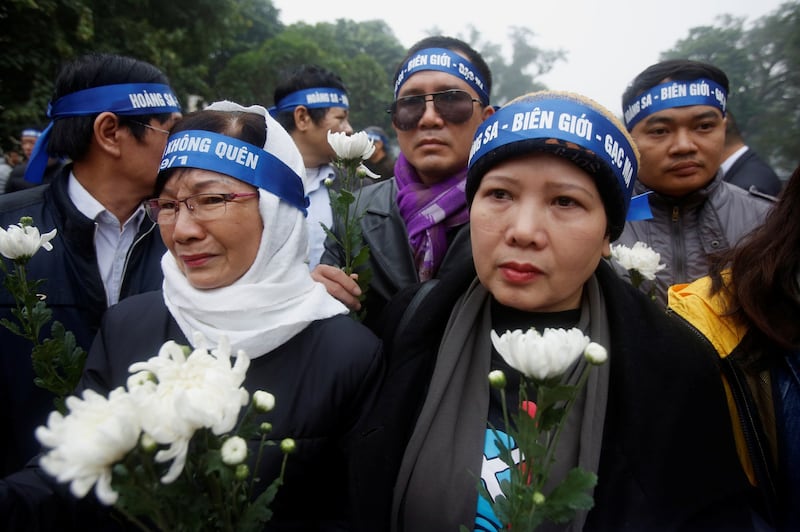Vietnam has denounced what it called the brutal behavior of Chinese law enforcement personnel who it said beat and injured Vietnamese fishermen on a boat intercepted near the Paracel Islands.
Vietnamese media said the Chinese attackers boarded the fishing boat near an atoll in the Paracel Islands in the South China Sea on Sunday and beat the crew with iron bars, seriously injuring four of them. They told Vietnamese authorities the men smashed the boat’s equipment and took away its catch.
China denied the accusations saying “on-site operations were professional and restrained, and no injuries were found.”
Both countries, as well as Taiwan, claim the islands but China occupies them entirely.
What are the Paracel Islands?
Known as Xisha in China and Hoang Sa in Vietnam, the archipelago consists of some 130 reefs and small coral islands, 400 kilometers (250 miles) east of central Vietnam and 350 km (220 miles) southeast of China’s Hainan island. They are 760 km (472 miles) north of the Spratly Islands, the other main disputed archipelago in the South China Sea.
The South China Sea is a strategically important shipping route with an estimated US$3.4 trillion worth of trade cruising through its waters every year.
The Paracels are believed to sit on top of large reserves of natural gas and oil though the extent is not known, as there has been little exploration of the area, partly due to territorial disputes over the islands.
The archipelago is surrounded by rich fishing grounds that generations of Chinese and Vietnamese fishermen have worked.

History of the Paracel Islands
Both Vietnam and China say that the Paracels are mentioned in their ancient texts. The name Paracel, however, was adopted in the 16th century after Portuguese explorers named the islands “Ilhas do Pracel”. “Pracel”, or parcel, is a Portuguese term used by navigators to refer to a submerged bank or reef.
France claimed the archipelago as part of the French Indochinese Union in the 19th century and put it under the same colonial administration as Vietnam’s southern mainland, known at the time as Cochinchina. The Chinese nationalist Kuomintang, now one of the main political parties in Taiwan, claimed the Paracels as territory of the Republic of China in January 1921.
Japanese forces occupied the archipelago between 1939 and 1945. Disputes over the islands continued in later years between the governments of the then South Vietnam, which annexed some reefs, and the People’s Republic of China.
On Jan. 19, 1974, Chinese troops attacked and defeated South Vietnamese forces deployed on the islands, killing 74 South Vietnamese sailors and soldiers in the so-called Battle of the Paracel Islands. Chinese troops then occupied the whole archipelago.
China’s construction
In 2012, China established Sansha City, headquartered on Woody Island, the largest Paracel island, which China callsYongxing. The administrative headquarters is in charge of all of the features China claims in the South China Sea, including the Paracels and the Spratlys to the south.

According to the Asia Maritime Transparency Initiative think tank, China has at least 20 outposts in the Paracels. Three of them have harbors capable of handling large numbers of naval and civilian vessels and five have helipads. China opened the civil-military Sansha Yongxing Airport in 2014.
Woody Island has been developed into a complete urban hub protected by HQ-9 surface-to-air missile batteries. It is home to a growing civilian population of at least 2,300.
Upgrades of island facilities have included a kindergarten and primary school in 2015. The island also has a courthouse, a cinema, banks, hospitals, post offices and a stadium, according to a report in Hong Kong’s South China Morning Post in May 2023.
Vietnam’s claim
Vietnam has not abandoned its claim over the Paracel islands, which it officially classifies as a district of Danang City, called the Hoang Sa District, established in 1997.
In its complaint about China’s treatment of the fishing crew, Vietnam’s foreign ministry referred to the islands as Vietnamese.
“Vietnam is extremely concerned, indignant and resolutely protests the brutal treatment by Chinese law enforcement forces of Vietnamese fishermen and fishing boats operating in the Hoang Sa archipelago of Vietnam,” foreign ministry spokesperson Pham Thu Hang said in a statement on Oct. 2.

Confrontations
In one of the most serious escalations of the dispute between Hanoi and Beijing over the archipelago, in May 2014 China moved an oil-drilling platform into waters near the Paracels, leading to a three-month standoff. The crisis triggered an unprecedented wave of anti-China protests in Vietnam, until China withdrew the oil rig a month earlier than scheduled.
Fishing crews from central Vietnam operate around the Chinese-occupied reefs and are often subjected to harassment by Chinese maritime militia and law enforcement personnel, fishermen say.
In 2020, a Chinese maritime surveillance vessel rammed and sank a Vietnamese fishing boat. Vietnam lodged an official protest, saying: “The Chinese vessel committed an act that violated Vietnam’s sovereignty over the Hoang Sa archipelago and threatened the lives and damaged the property and legitimate interests of Vietnamese fishermen.”
Edited by Mike Firn.
